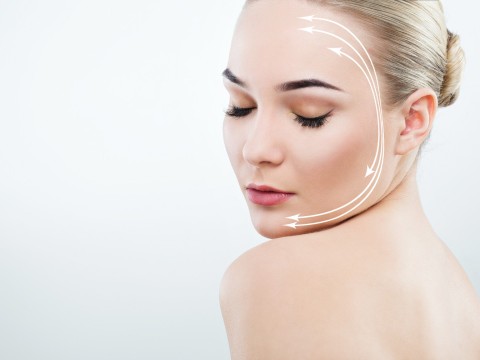A deep plane facelift is a cosmetic surgical procedure performed to correct the signs of aging on the face and neck. The Deep Plane Facelift focuses on lifting and repositioning the deeper layers of facial tissues, other than the skin, for a more natural and long-lasting result.
The following are some key points about the deep plane facelift:
Technique: Deep plane facelift differs from the conventional one in that deeper layers of the face are involved, including the SMAS and deeper facial tissues, other than mere lifting of skin and superficial tissues. This helps in the more effective restoration of volume loss and sagging.
Results: Deep-plane facelifts tend to look fresher and result in more natural outcomes. Working in deeper structures with the ability for a complete rejuvenation for both sag and volume loss.
Recovery: The deep plane facelift takes more time to recover than less invasive surgeries. There will be swelling, bruising, and discomfort post-surgery. These generally subside with time. Optimal recovery is under good post-operatory care.
Longevity: The deep plane facelift is quite long-lasting, as this is a deep procedure. Indeed, the natural aging process does continue, and maintenance and skincare will still be important.
Candidates: Generally speaking, candidates are those who have significant sagging or volume loss of the face and are in overall good health with realistic expectations of the outcomes.
The important thing, in case a deep plane facelift is an option one may consider, is to consult a board-certified plastic surgeon with this kind of technique. He will evaluate the particular needs and may recommend some measures in each particular case.
- Abdominal liposuction
- Arm Lift (Brachioplasty)
- Back Liposuction
- Blepharoplasty (Eyelid Surgery)
- Brazilian Butt Lift (BBL)
- Breast Augmentation
- Breast Augmentation with Tear Drop Implants
- Breast Correction
- Breast Implant Removal
- Breast Implants With Breast Lift
- Breast Lift
- Breast Reconstruction
- Breast Reduction
- Brow Lift
- Buccal Fat Extraction
- Butt Implants
- Buttock lift
- Buttock Reduction
- Cheekbone Reduction
- Chin Implant
- Health Insurance
- Online Healthy Life Assistant 9/5
- Post - Experience Follow Up 6 Month
-
Extra Privileges
No suitable hotel found for the relevant dates!
- Health Insurance
- Online Healthy Life Assistant 24/7
- Post - Experience Follow Up 1 Year
- Pre-Treatment Doctor Consultation
-
Extra Privileges
No suitable hotel found for the relevant dates!
 Private
Private
- Health Insurance
- Healthy Life Butler
- Post - Experience Follow Up 2 Year
- World-Famous Doctor Consultation
-
Extra Privileges
No suitable hotel found for the relevant dates!
* Price varies depending on extra and upgrade selections.
A facelift is more technically known as Face lift, one of the popular cosmetic surgeries that reduce the effects of aging in wrinkle and skin sag. Generally, in the surgery of a facelift, a surgeon removes extra facial skin and tightens the skin on each side of the face through the incisions behind the ears. Commonly, surgeons are doing a facelift along with a neck lift, and they may combine another procedure along with a facelift: eyelid surgery.
Whereas different techniques are applied and individual requirements differ, the length of the surgery generally ranges from 2 to 5 hours.
This will vary from person to person, but in the initial days, one may have swelling and bruising. One should be advised to limit activities until recovery and should follow recommendations made by one's doctor.
The age factor is mainly 45 and above for the classical facelift surgeries, though the younger ones may be more suitable for endoscopic operations. This technique is only advisable for people with sagging skin and wrinkles on their skin. Yet, one needs to remember that not every person is suitable for undergoing the operation.
Facelift surgeries are solely performed by plastic surgeons in a hospital and usually under general anesthesia. The size of the incision to be made depends on the type of facelift to be performed: a mini facelift, endoscopic, or classic facelift. Following the incision, the surgeons proceed to eliminate excess skin and enhance facial tightness by lifting and securing the skin. The incisions are then closed using either sutures or specialized skin adhesives. Post-surgery, a hospital stay of two days is customary. Throughout this recovery period, a drainage tube is usually inserted under the skin to collect blood and fluids. The removal of this tube takes place before the patient is discharged from the hospital.
Antibiotics normally continue for at least five days following a facelift. Sutures are frequently removed within ten days. Over this period, one has to make use of some special wound creams recommended by the doctor. Post facelift surgery, common experiences include bruising, swelling, tightness, and numbness. The sensations of tightness and numbness are expected to diminish within a week, while bruising and swelling may persist for up to a month.
The aging process is continuous, whereas the facelift is a surgical interference. The results are not permanent; it depends upon your dedication to good health.
In a facelift, incisions are made behind the ears and placed carefully inside the natural folds to hide them as much as possible. After surgery, these incisions will barely be visible. With good wound care and a good healing process, scarring from the latter might be at a minimum and sometimes barely visible, adding to a cosmetically acceptable result.
Generally patients needs to stay 1 week to 10 days in Turkey.




